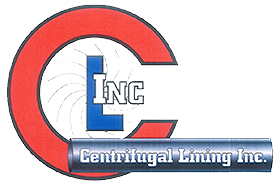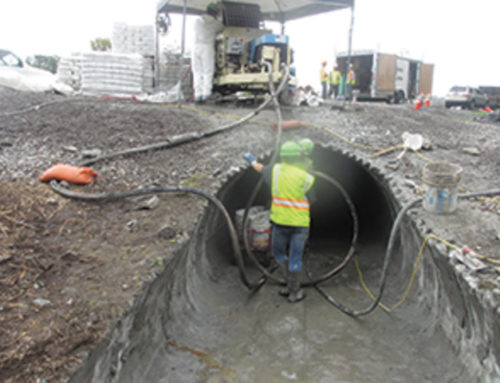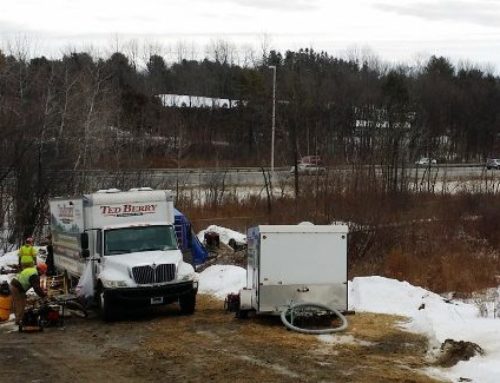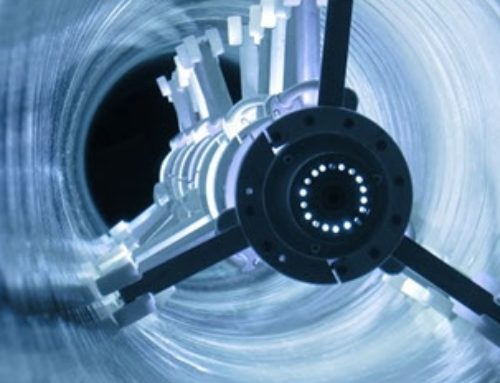Whether it is a new project or a rehabilitation project, working in Environmentally Sensitive Areas (ESA) presents unique challenges. The Washington Suburban Sanitary Commission (WSSC) has encountered these same ESA dilemmas as it continues working on sewer-main improvements to its collection system.
WSSC is the eighth largest water and sewer utility in the United States and is responsible for more than 5,400 miles of sanitary sewer pipelines. The utility serves more than 1.8 million residents in Montgomery and Prince George’s counties in Maryland, which are situated in the Washington, D.C., Metropolitan Area. Over the years WSSC has utilized a variety of trenchless rehabilitation technologies as part of its system upgrades.
Like many other sewer authorities, WSSC is currently working through a Consent Decree Order issued by the U.S. Environmental Protection Agency (U.S. EPA). Pleasants Construction is one of the contractors that has partnered with WSSC to implement the improvements necessary to their infrastructure. Pleasants Construction, a Montgomery County, Md.-based construction company, is also a certified installer of Reline America’s Alphaliner.
According to Ron Callahan, a project manager for Pleasants Construction, “WSSC’s ESA contracts have involved working in areas with parklands, protected wildlife regions such as Bald and Golden Eagle Protection, wetlands, residential neighborhoods and fish rescues as part of stream restoration work.”
Additional considerations on the contracts involved disruption to residential property and daily routines, topographical challenges (drastic elevation and terrain changes) on the project site and access to the work area. The work being performed had to comply with the mission statement of WSSC, which is “We are entrusted by our community to provide safe and reliable water, life’s most precious resource, and return clean water to our environment, all in an ethical, sustainable, and financially responsible manner.”
When faced with the decision regarding relining of a pipe WSSC has frequently used Reline America’s Alphaliner, a fiberglass-reinforced cured-in-place-pipe (CIPP) liner cured using ultraviolet (UV) light. Utilizing this method of trenchless technology allowed WSSC to meet the goal of its mission statement.
According to Steven Radosevich, an engineer and administrative contract manager with WSSC, “WSSC applies a holistic approach of the asset (repair technology) when evaluating a project. They take into consideration the fact that when they use fiberglass-reinforced UV CIPP, a much thinner liner thickness is able to be used.”
Despite its thinner wall thickness, fiberglass reinforced CIPP has much greater strength than other CIPP methods.
WSSC also evaluates the product lifecycle before deciding on the technology it selects to implement. Since the liner is much thinner, it translates to less of an impact on the pipe diameter. This makes the pipe better suited for future relining, if needed, once the liner reaches it 50 to 75 year life span. Liners with thicker walls could result in dig and replace methods when future rehabilitation becomes necessary. This is not only more expensive but also more environmentally invasive.
“Another advantage to using UV CIPP is that it is controllable, predictable and accountable. I can see that every foot of the CIPP was cured properly,” says Radosevich.
This is achieved through the use of Reline America’s “Quality Tracker System.” The Quality Tracker System is a computer-controlled curing and documentation system that allows for the monitoring and controlling of the entire curing process while providing supporting documents at the end of the installation to the municipality and/or engineering firm. The Quality Tracker System allows the installer to view the liner via CCTV once it has been pulled into place and fully inflated inspecting the liner for defects prior to curing. The built-in infrared sensors monitor and record every foot of the curing process.
Because of the smooth finish on the inside of the fiberglass reinforced liner Radosevich says it was another reason to use it in their collection system upgrades. The finished interior surface is similar to PVC pipe. While all CIPP reduces the inside diameter of the host pipe, in most cases, the UV CIPP actually increases pipe flow capacity due to the new surface being much smoother than the original host pipe and the liner thickness being so thin.
Furthermore, UV CIPP has less environmental impact compared to other CIPP technologies. Fewer pieces of equipment are required and the trucks necessary for liner installation are smaller permitting access to hard to reach areas more easily. On larger diameter trunk lines the cure time is shorter when using UV light technology resulting in less energy consumption. The temporary access roads required for UV CIPP into ESA’s do not have to be as large or heavy duty as with other technologies, reducing environmental impact on the surroundings. The faster cure results in less money and energy spent on bypass pumping, as well.
Since the UV CIPP liners have a much longer shelf life, it allows WSSC (and municipalities) more time to make informed decisions as compared to liners with very short storage life. If issues arise once the bypass and cleaning have taken place the municipalities have the ability to make the right choice for each situation with the knowledge that they will not have to pay for a liner that expires. Reline America’s Alphaliner has a six month minimum shelf life (with no refrigeration required). The long shelf life allows for Reline America, which is located in Saltville, Va., to ship the Alphaliner to their certified installer throughout North America.
The rapid growth of UV CIPP in the United States seems to be following the same pattern seen in Europe where it has gained the largest market share in the CIPP industry.
Michael Hoffmaster is business development manager at Pleasants Construction.





